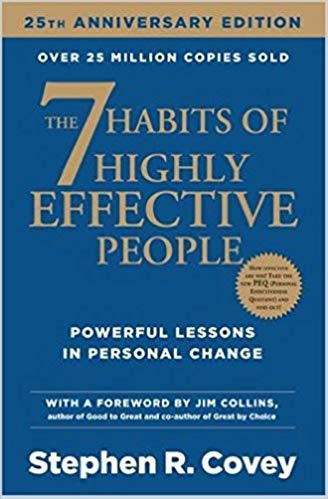

This article is an excerpt from the Shortform summary of "The 7 Habits of Highly Effective People" by Stephen Covey. Shortform has the world's best summaries of books you should be reading.
Like this article? Sign up for a free trial here .
When a friend comes to you with an issue he’s having, how often do you respond with a story about your own similar experience and what you did to resolve it? Or how commonly are you met with this kind of response when you are venting to someone else?
We discussed in Habit 4 that an essential step in reaching a Win/Win solution is to try to understand the other person’s perspective and concerns. The key to truly understanding people is empathic listening, which is listening with the intent to see their perspective.
Why Should We Listen Empathically?
Although well-intended, responding with your own experience offers a solution without really trying to understand the problem or that individual’s perspective, and is not empathic listening. It can cause the first person to be reluctant to share more because she doesn’t feel understood, and she may be even more reluctant to take any advice offered: How can she trust your advice if it’s not coming from a place of actually understanding the problem?
We do this all the time in communication — prescribing a solution before diagnosing the problem — but think of how ridiculous this response would be in another context.
Here’s one empathic listening example. Imagine you go to the eye doctor because you’re having trouble with your vision. You start to explain your problem to the optometrist, and she quickly takes her own glasses off her face and tells you to try them on. The glasses do nothing to help your vision, but when you tell the doctor this, she insists that the glasses work perfectly for her, so they should work for you too; she tells you to try harder. As hard as you try, the glasses still don’t help your vision.
If You Aren’t Listening Empathically, You’re Not Really Listening
Empathic listening requires a paradigm shift for most people, because often people listen in order to reply, and their responses are based more on their own experience and interpretation than what the other person is saying. People typically listen in one of four ways:
- Ignoring: In this case, you’re really not listening to the other person.
- Pretending: This is when you give automated responses like “right” or “absolutely” at the appropriate cues, but you’re not actually listening.
- Selective Listening: You’re only listening to pieces of what the other person is saying, as we tend to do when small children are going on incessantly.
- Attentive Listening: You’re listening closely to everything the person is saying.
None of these is sufficient for truly understanding.
Empathic listening is the fifth form of listening; empathic listening goes beyond attentive listening, because you’re not only hearing every word but also listening with an effort to understand the other person’s paradigm. You don’t need to agree with that person, but simply to understand the way she sees things. You must open your mind to do this, and accept the possibility that this level of understanding could also influence the way you see things.
Empathic listening takes in information from all forms of communication, both verbal and nonverbal. Experts estimate that the words we use constitute only 10 percent of our message, the sounds of the way we speak (e.g. tone, cadence, and volume) make up another 30 percent, and our body language represents 60 percent of our communication. When you listen empathically, you pick up on all these communication cues to understand what the person is really trying to express. This all created a empathetic communication pattern.
When we fail to listen empathically — from the other person’s perspective — we listen autobiographically, interpreting everything through our own lens and experiences. Autobiographical listening tends to yield one of four responses.
- Evaluate: You determine sides and agree or disagree. You are jumping to decisions without fully understanding the situation, which robs the person of the emotional space she needs to process a problem.
- Probe: You ask questions based on your interpretations and experiences, and not based on what the person is saying. This controls the conversation and is invasive to the other person without getting you any closer to understanding; probing often creates communication barriers between parents and children (e.g. “How was school?” “Fine.” “What did you learn?” “Stuff.” “What’s wrong?” “Nothing.”). This approach also uses left-brained logic for the right-brained task of understanding emotion.
- Advise: You offer advice on what to do and how to fix the problem, prescribing before diagnosing.
- Interpret: You try to figure out the person’s motives and behaviors based on how you would act in that situation; this is different than trying to understand the other person’s perspective.
Crucial for Productive Interactions
Empathic listening makes your interactions more productive in multiple ways.
First, it gives you the most useful information to work with as you interact with the other person because you’re getting an accurate picture of how this person views and feels about a situation, as opposed to your own skewed interpretation of it. Just as with any problem, you need accurate data to reach an effective solution.
Second, when people recognize that you’re genuinely trying to understand them, they’ll be more inclined to trust you and open up further, and your effort will make a big deposit in your Emotional Bank Account.
Third, empathic listening gives a person “psychological air,” the figurative space she needs to process a problem. To understand this, imagine all the air was sucked out of the room and you couldn’t breathe; you wouldn’t be able to focus on anything but your ability to breathe and survive. Similarly, if you don’t have air for your psychological survival — which includes being understood, affirmed, validated, and appreciated — you can’t focus on any other efforts like problem solving. Just like in a survival situation, you might begin acting frantically and illogically, trying anything you can to gasp for air.
Understanding and validating someone gives her psychological air to be able to move forward and work through a problem. Once she feels heard and understood, she’s more inclined to hear your perspective, and then you two have the groundwork from which you can reach a solution.
As you gain a deeper understanding of other people’s perceptions and perspectives, you’ll also begin to see how different perspectives influence people’s interactions. This insight will help as you interact and negotiate with people, because you won’t be confounded trying to understand their behavior through your own lens, and instead you’ll appreciate that they have different paradigms that are shaping their behavior, and you will become an empathetic communicator.
Four Stages of Empathic Listening
True empathic listening stems from a paradigm that includes a genuine desire to understand other people; from that foundation, there are skills you can practice to master empathic listening.
If you’re new to empathetic communication, you can progress through four stages of listening, each one becoming more understanding of what the person is feeling. Pay attention to find empathic listening examples
1) The first stage is mimicking, often called “active” or “reflective” listening, which involves repeating a person’s words back to her. Mimicry gets you into the practice of attentive listening, and avoiding any autobiographical responses. But it’s not very effective beyond that because you’re only repeating — not processing — what she’s saying. Additionally, if you don’t have a solid relationship with the other person or show a genuine interest in what she’s saying, mimicry can come off as insulting.
For example, your son says, “I’m so over school, it’s pointless!”
You respond, “You’re over school. You feel like it’s pointless.”
2) The second stage is rephrasing the content, which at least requires you to process what you’re hearing, but still limits your listening to verbal communication. Rephrasing requires you to think about what the person said, but you’re doing so through a left-brained, logical lens rather than an emotional one.
In this case, your response is, “You’re tired of school and you don’t think it will help you in life.”
3) In the third stage, reflect the feelings the person is expressing. This brings the right brain into play, and begins to understand the other person’s perspective. You’re focusing on more than the person’s words — you also include her emotions.
In this stage, you’d respond by saying, “You’re feeling frustrated and exasperated.”
4) The fourth stage integrates both the second and third stages, so that you’re rephrasing the content of what the person is saying and reflecting her feelings. This brings together the left and right sides of the brain to understand not just the words she’s saying but also the emotions she’s communicating.
In this case, you’d respond, “School is making you feel frustrated and exasperated.” The content you’re extracting is school, and the emotion is frustration and exasperation.
When you practice empathic listening at the fourth stage, you show your desire to understand and give the person psychological air to further process what she’s feeling. Sometimes people just need to talk through their problems, and when they feel heard and understood, they have the psychological air to reach solutions on their own. Other times, people do want your help working through a problem, but you must give them the time and space to walk you through the issue at their own pace, gradually working through to the root of the problem.
Empathic listening requires a bigger initial investment of time and energy to really try to understand the person’s perspective, but in the long run it saves more time and effort by avoiding assumptions and misunderstandings.
Problems Are Opportunities for Growth
In a relationship, every problem that arises is actually an opportunity to empower and deepen that relationship. In this way, any problem with P (the emotional, organizational, or other benefits that the relationship brings each person) is a chance to build PC (the healthy relationship that fosters P). Practicing the above will help you form methods of empathetic communication.
Think about this empathic listening example. If your child comes to you with a problem, rather than being annoyed or burdened by it, consider it an opportunity to strengthen your relationship. The time and energy you spend working through that problem will make a major deposit in your Emotional Bank Account. Additionally, you and your child will likely both develop a better understanding of each other that will benefit your relationship moving forward.
This is also a critical concept in business: When a customer comes in with a problem or complaint, don’t be resentful or defensive. Instead, show a genuine desire to resolve the issue and go the extra mile in treating the customer well and providing excellent service. This response creates even greater customer loyalty and satisfaction that eclipses the initial problem.
Empathetic communication is a skill that takes time to nurture and cultivate. It takes practice and daily effort to make sure you practice empathic listening in your relationships, both personal and business, but the results offer stronger relationships and better solutions for all.
———End of Preview———

Like what you just read? Read the rest of the world's best summary of "The 7 Habits of Highly Effective People" at Shortform . Learn the book's critical concepts in 20 minutes or less .
Here's what you'll find in our full The 7 Habits of Highly Effective People summary :
- How to prioritize the hundred tasks you have to focus on the one or two that really matter
- The right way to resolve every disagreement and argument
- How to avoid burning out and succeed over 20+ years






